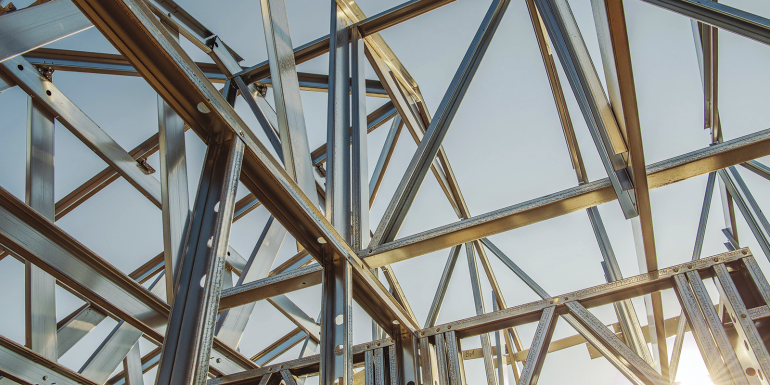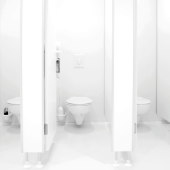Cross Report 968: Execution not matching design assumptions

This situation highlights the need for temporary works to enable permanent works to be installed correctly.
This report involves a large residential building project. The building was steel framed and at first-floor level had large span transfer beams that took the load from major columns spanning over a wide opening at ground floor. The transfer beams were arranged in pairs with the design load assumed to be spread evenly between them.
Early during occupation, concrete soffit panels that were attached to the bottom flanges of the transfer beams were found to be cracked. Upon investigation, it was discovered that the bottom flanges of the pairs of beams had spread apart by up to 70mm. An analysis was undertaken by the original designer and independently by a third party.
The conclusion they both reached was that the loading from the column was applied to the inner part of the inside flanges at the tops of the pairs of transfer beams and not directly over the webs as the design had assumed. This was causing a rotation of the beams; failure was only averted by secondary connections and fixings causing some additional restraint.
Remedial measures were put in place. The designs had been reviewed by building control and also by an independent third-party checker before construction. The designs were, in fact, fine; but the connection of the column to the pairs of beams was not detailed at that point, and it was not highlighted that this was a critical part of the design.
Comments
Normal design implicitly assumes members are loaded in the vertical direction with members restrained against torsion. However, that assumption can be invalid. It is especially important to consider possible twists during construction, which can easily occur, say, during successive increments of vertical loading. A more general issue is that, almost invariably, loading and stability conditions will differ between construction stages and the completed stage. The onus is on the whole team to assure safe construction can take place and permanent works designers must ensure that any limitations on loading conditions are conveyed to contractors.
A point made by the reporter is that the alignment of the column supported on the transfer beams was not directly over the webs. For safety, realistic loading conditions must always be part of the model. In reality, no axial load can be presumed totally concentric because positional tolerances exist and are permitted. A column is always going to have some eccentricity to its support, and a heavy axial load at a small tolerance is going to produce significant torsion. It might be recalled that one cause of the box girder bridge failures in the 1960/70s was that transverse girder webs did not align with the supports below and the webs buckled as a result.
In practical terms, where there are twin beams consideration should be given to how the pair will interact and provision made for eccentricities and load sharing. To ensure this is the case, the detailed design drawings should be available to the contractor at the time of constructing the relevant elements. Having a process in place whereby the execution is not allowed to commence without the detailed design stage being completed and approved would help prevent similar issues.
Detail, alignment and tolerance all need attention at all stages of construction. Designers must challenge themselves: How do I know this will be safe and will remain so? What must be done right (or in some specific way) to ensure this safety?






